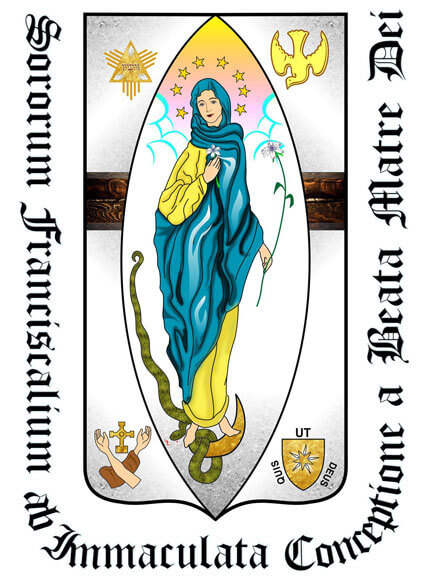THE SPIRITUALITY OF TERESIA VAN MIERT
Reading The 15 letters of Teresia van Miert in detail, we discover the four keywords that offers entry to her spirituality. From the very beginning, it appears that her religious life is a happy vocation. Although she was well aware that this kind of life asked for many sacrifices, she wanted to impart to her Sisters that the choice of this form of life made her happy. Her life was an answer to His life and it was out of this inspiration that she would also move others.
This response-able life brought her to herself. Her relationship towards the Other shows who she was in her deepest self. This self-knowledge made her lowly, “humble”, as she called it herself. For Teresia, humility formed the basis on which her spiritual life was built: “Without humility there is no progress on the way of perfection.”, she wrote to the Sisters. To express how fundamental humility was to her, she compared spiritual life to a house that was being built. Humility is the foundation on which the whole building rests. The stronger the foundation, the stronger the building can be.
Humility is not so much then of a special virtue, but more of a fundamental disposition, an attitude, a way of life from which you look at yourself and the other. The spirituality of Teresia van Miert has everything to do with her being human. Therefore, it was very important for her to distinguish who one is in her deepest self.
It is no wonder that she sees obedience as an extension of lowliness. If you know your place with respect to God, who pre-eminently stands for the Other, then you also know your place with regard to your fellow being. Although Teresia was telling her Sisters that obedience had a very important function within the community wherein they lived, that was, for herself, not everything. It is of greater importance that she saw obedience in the light of Christ’s obedience. The path He trod was not an easy one. Still, He remained obedient to His Father till the very end. In imitation of Him, Teresia wanted to follow this path of obedience. This does not mean that she was not aware that the path she followed with the Sisters was a difficult way. She told them that the life of a religious is bound to sacrifices. It is being able to keep distance from your own needs and longings, so that there will be space to listen and to hear the voice of your fellow being. If we relate to one another in this way, then we can say that we love one another.
Loving is the core of Teresia’s spirituality. Although it is in living in mutual harmony, it is even more than that. Loving is giving a response. To respond to the love of God for us people. Our human love is not more, but also not less, than a reflection of His love. His love bears our love. Therefore, Teresia could write to the Sisters that “it is an insult to the Divine Bridegroom Himself when we do not want to discover the good He has placed in a soul He loves.” When we see it this way, her life is a sign of love. She is touched by God’s love for all people and that moved her. She let herself be carried away to the trail of His love and she could not do otherwise than take the others with her in that trail.
